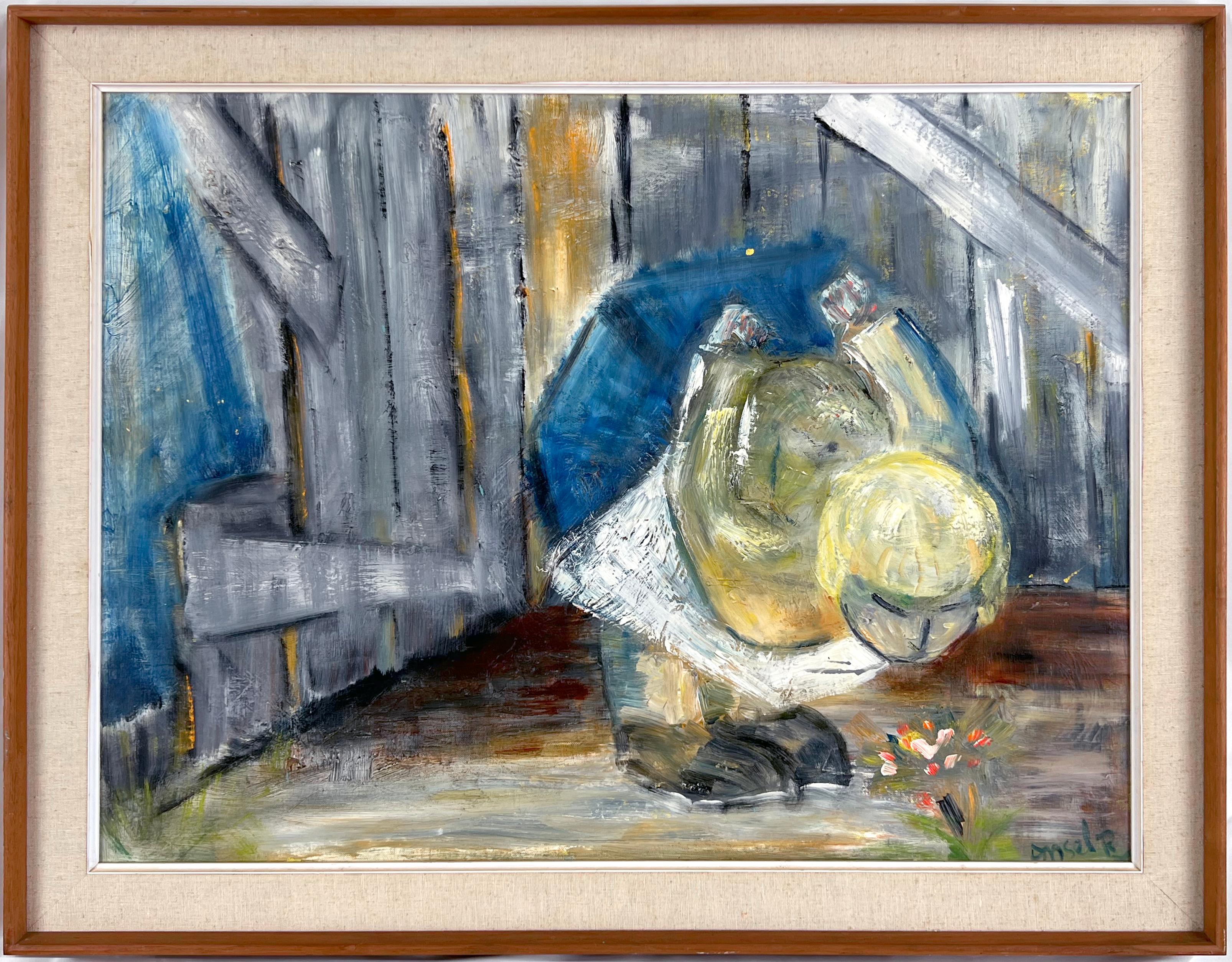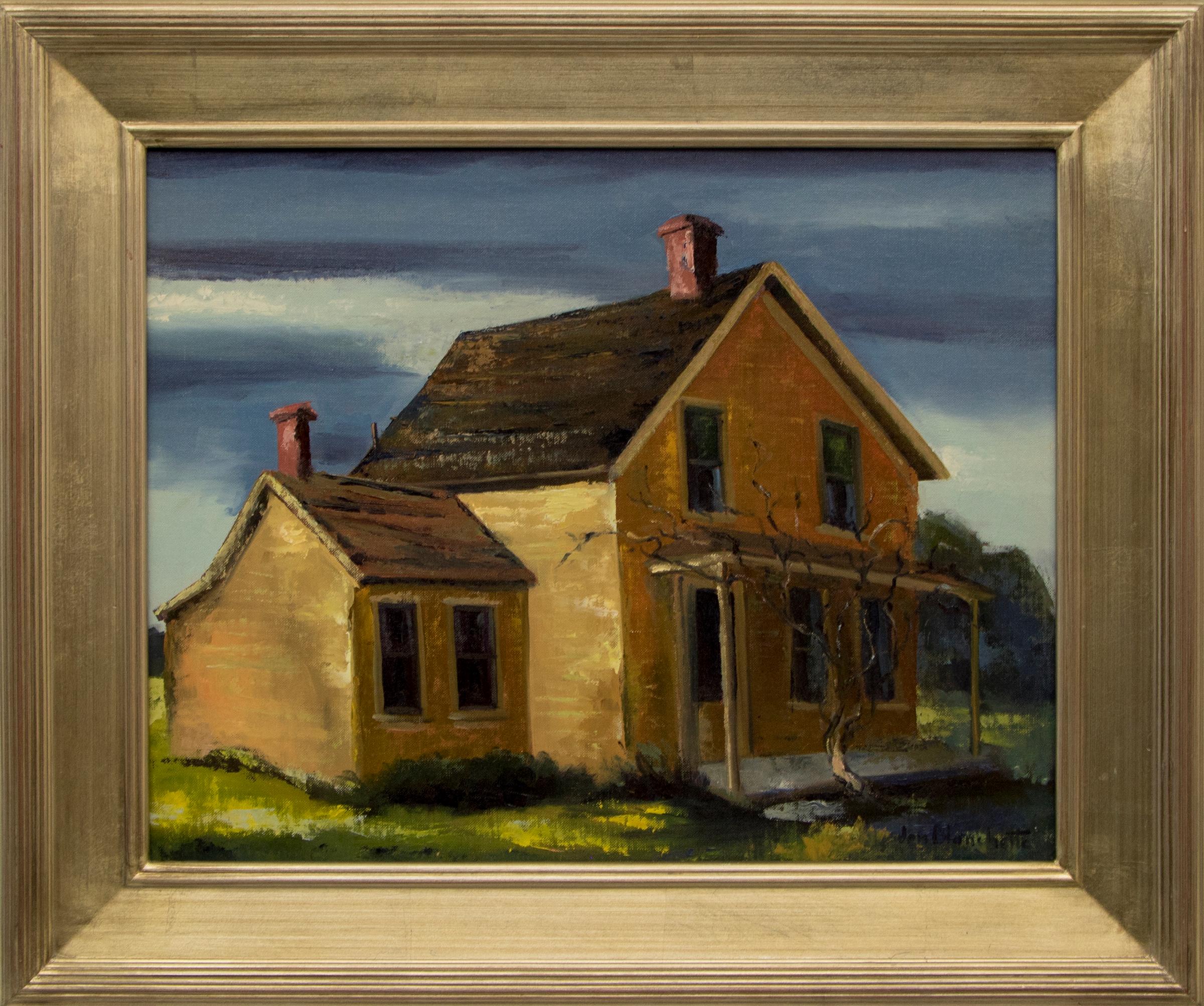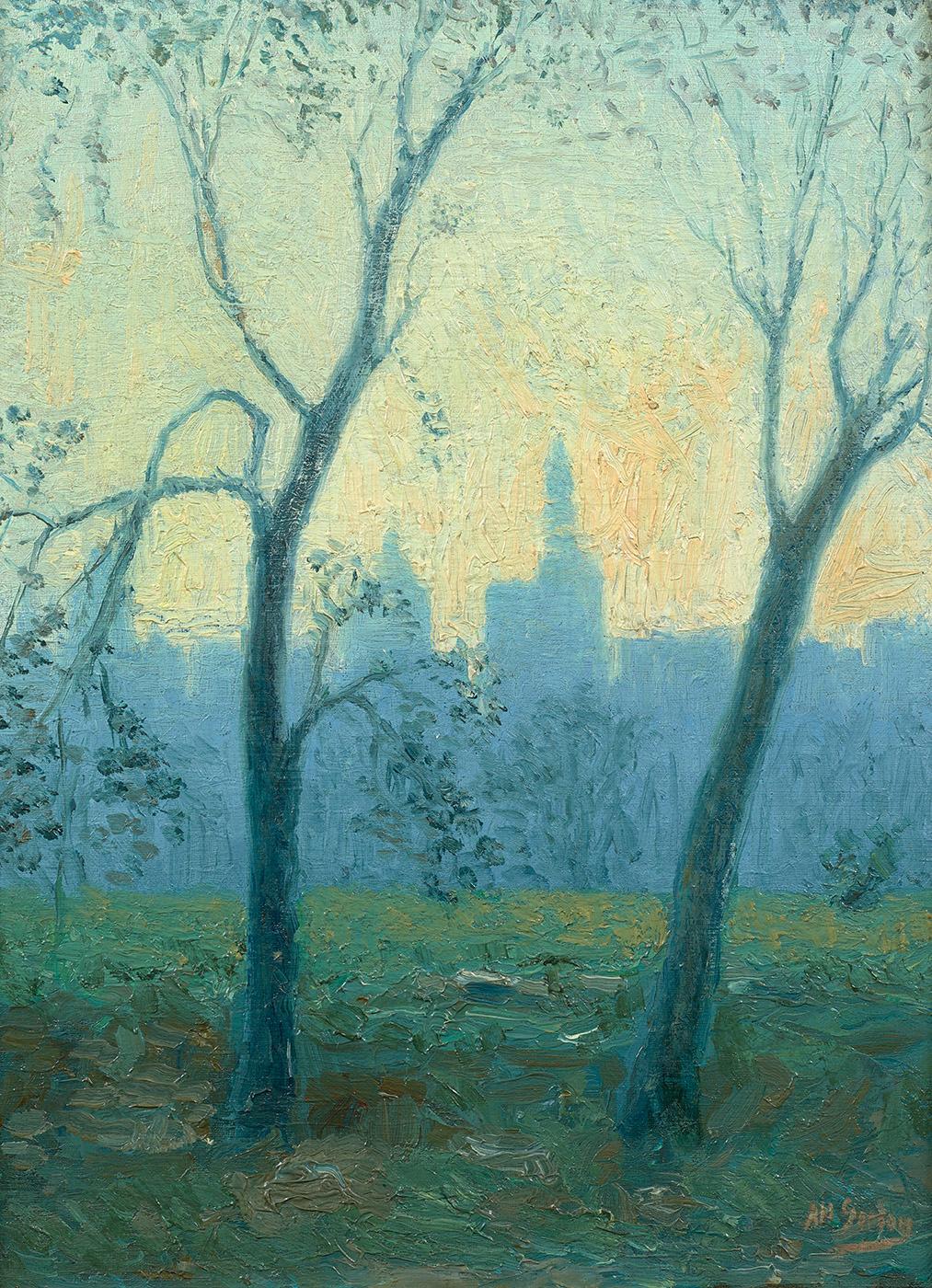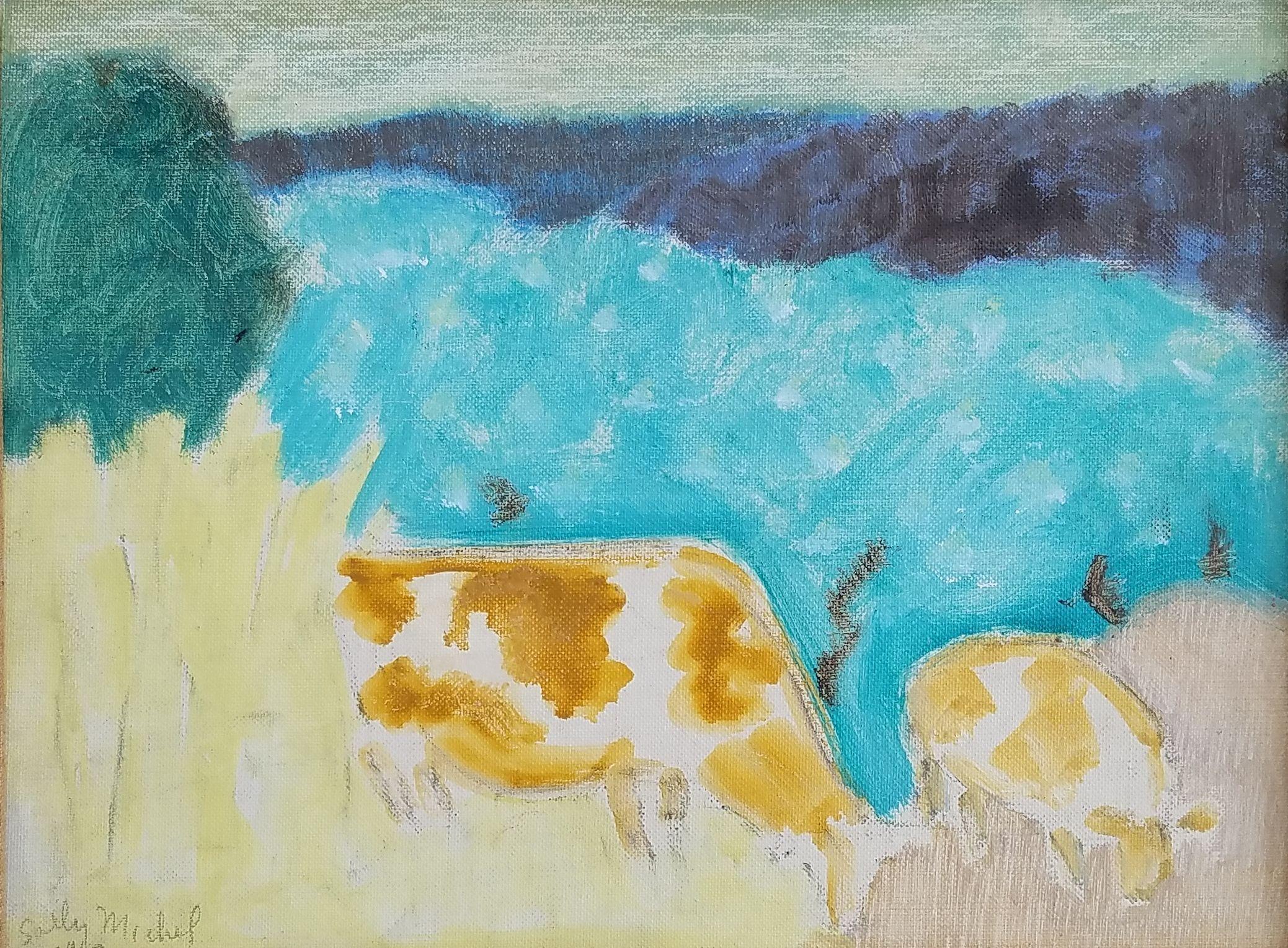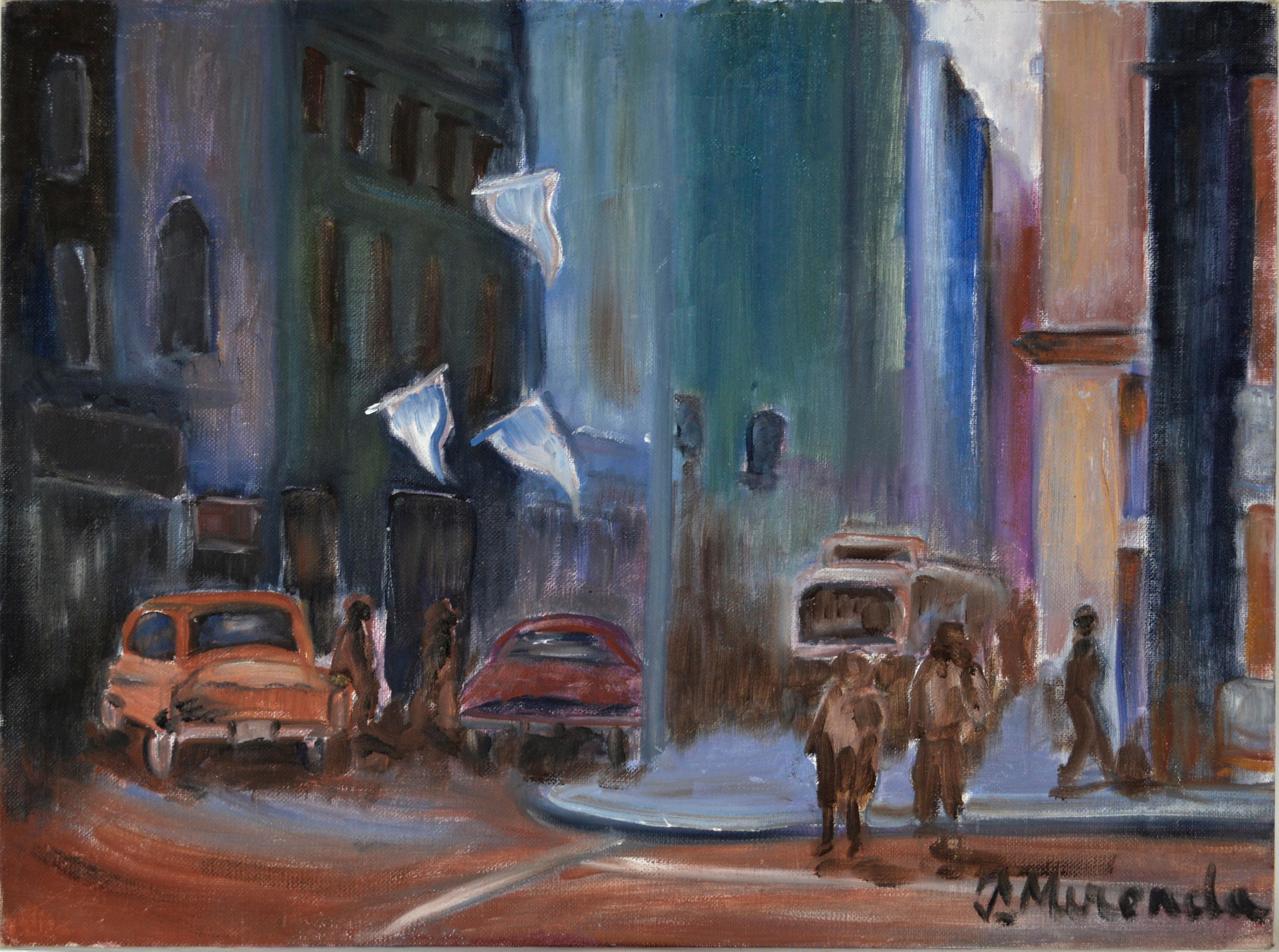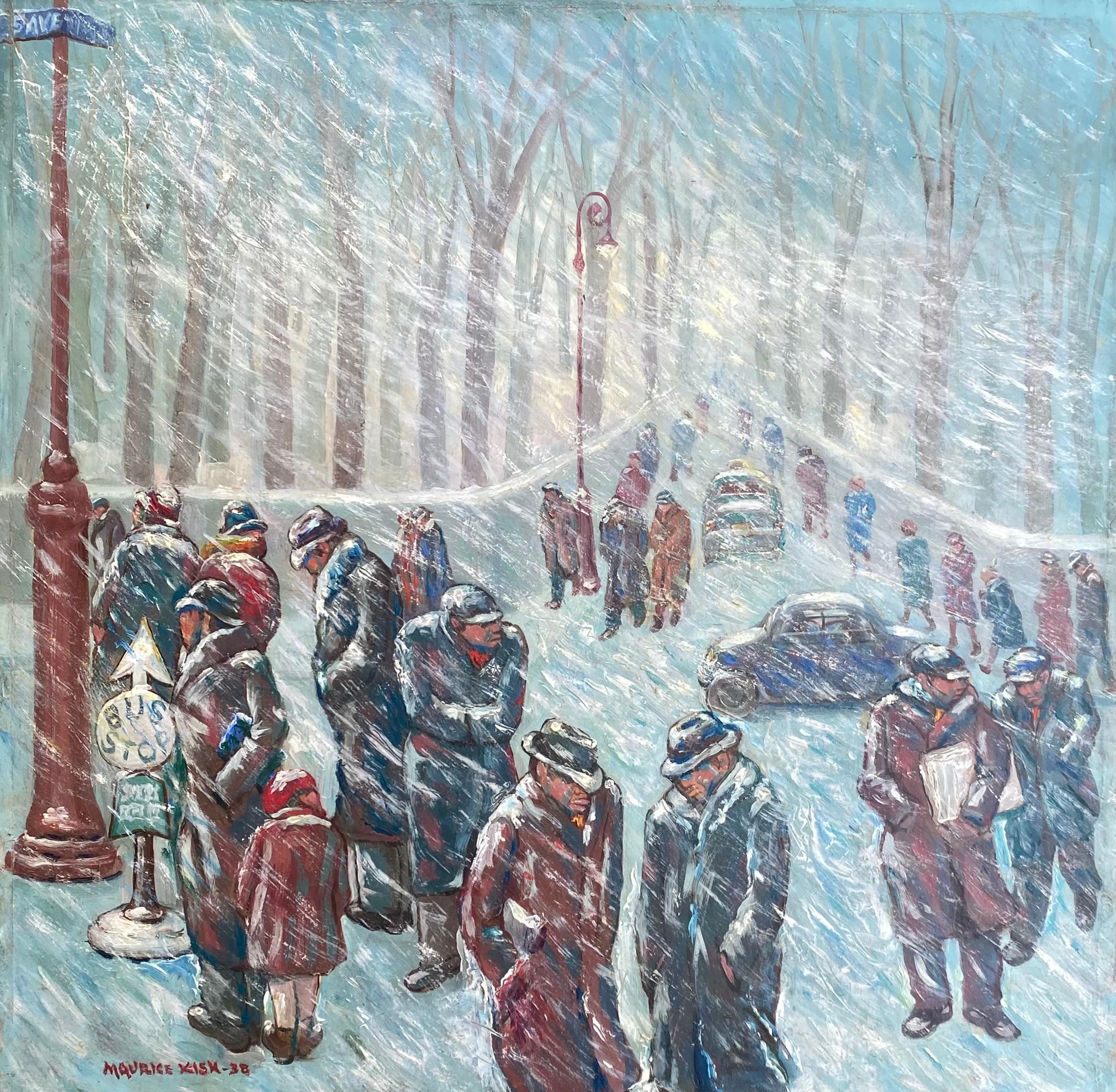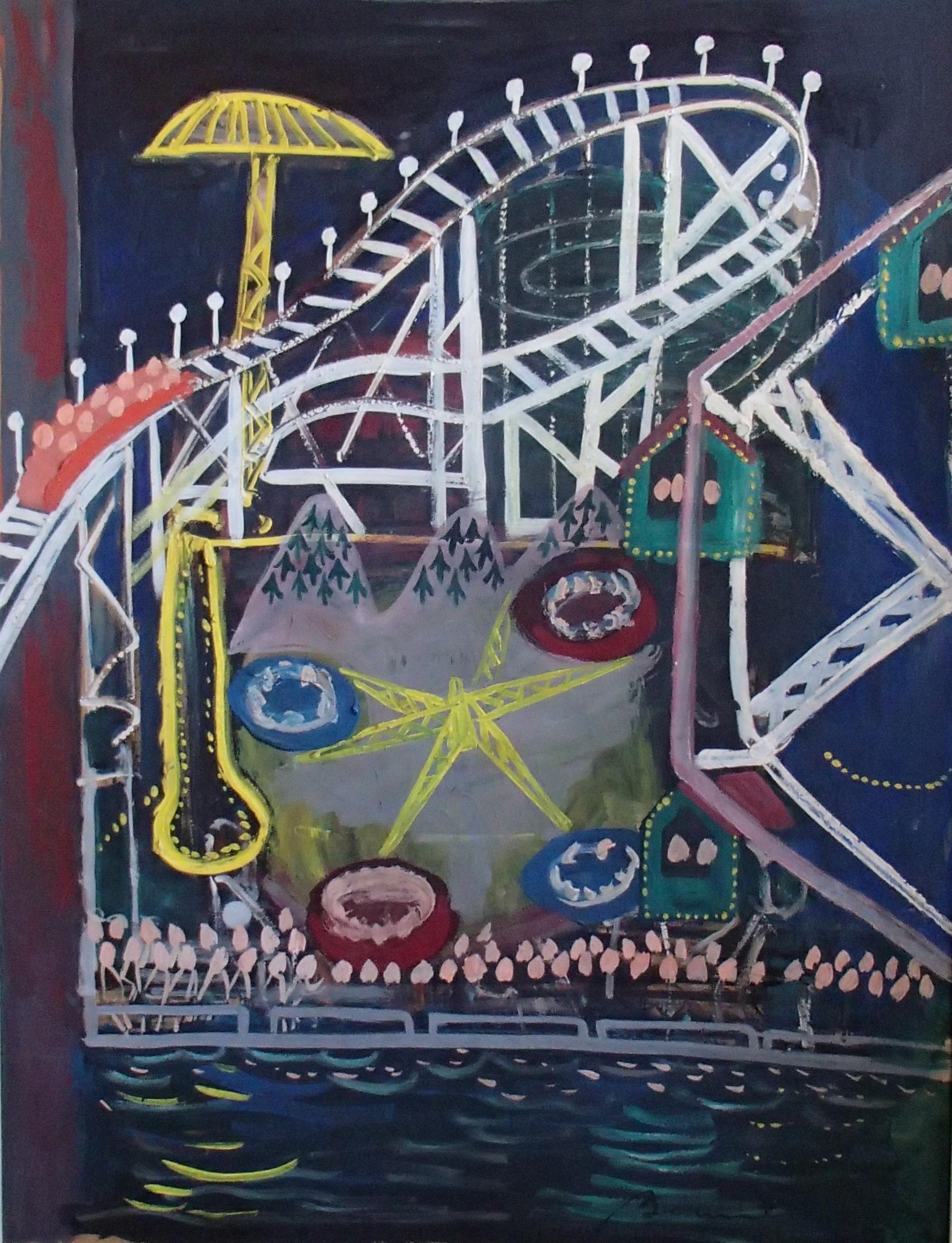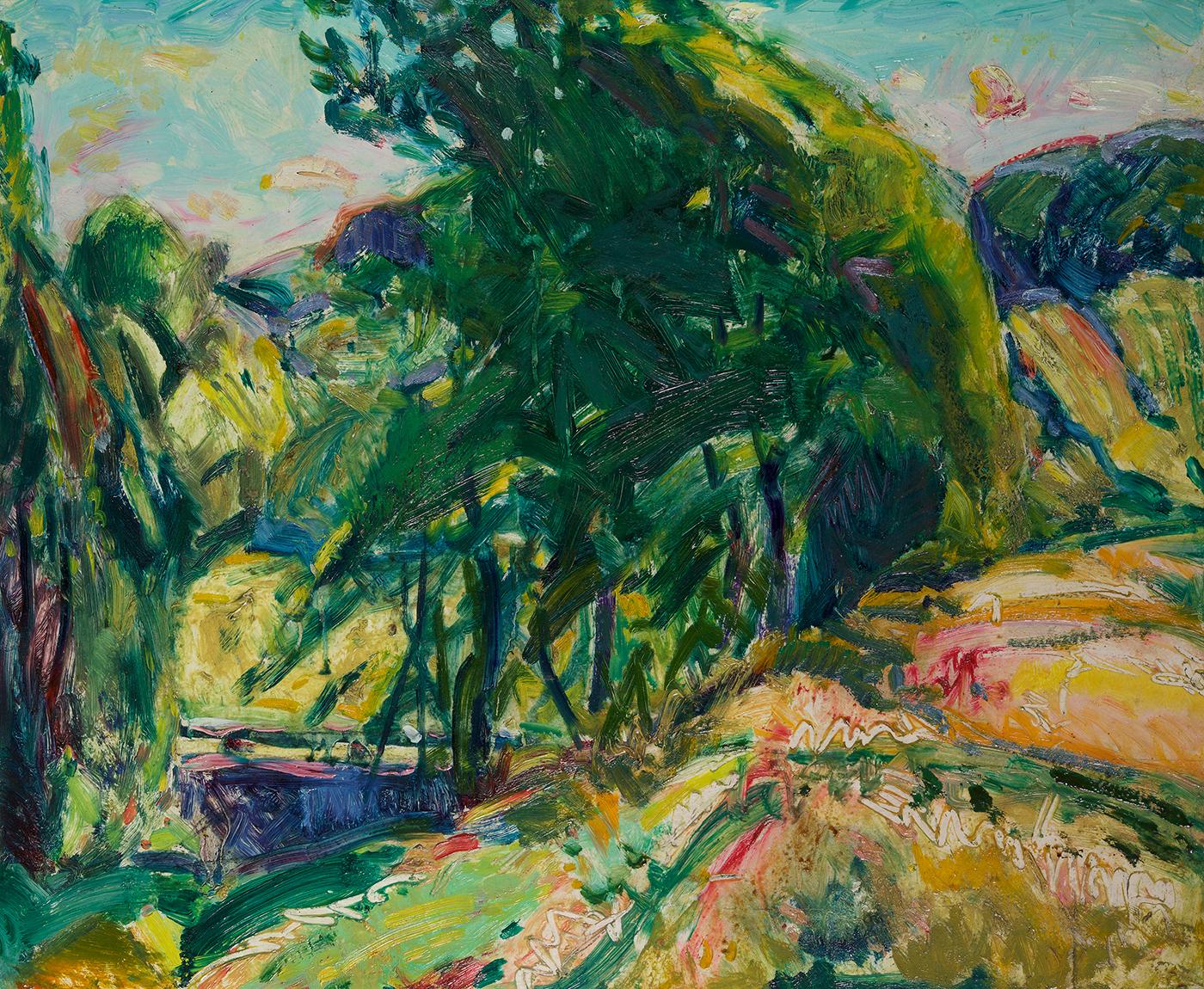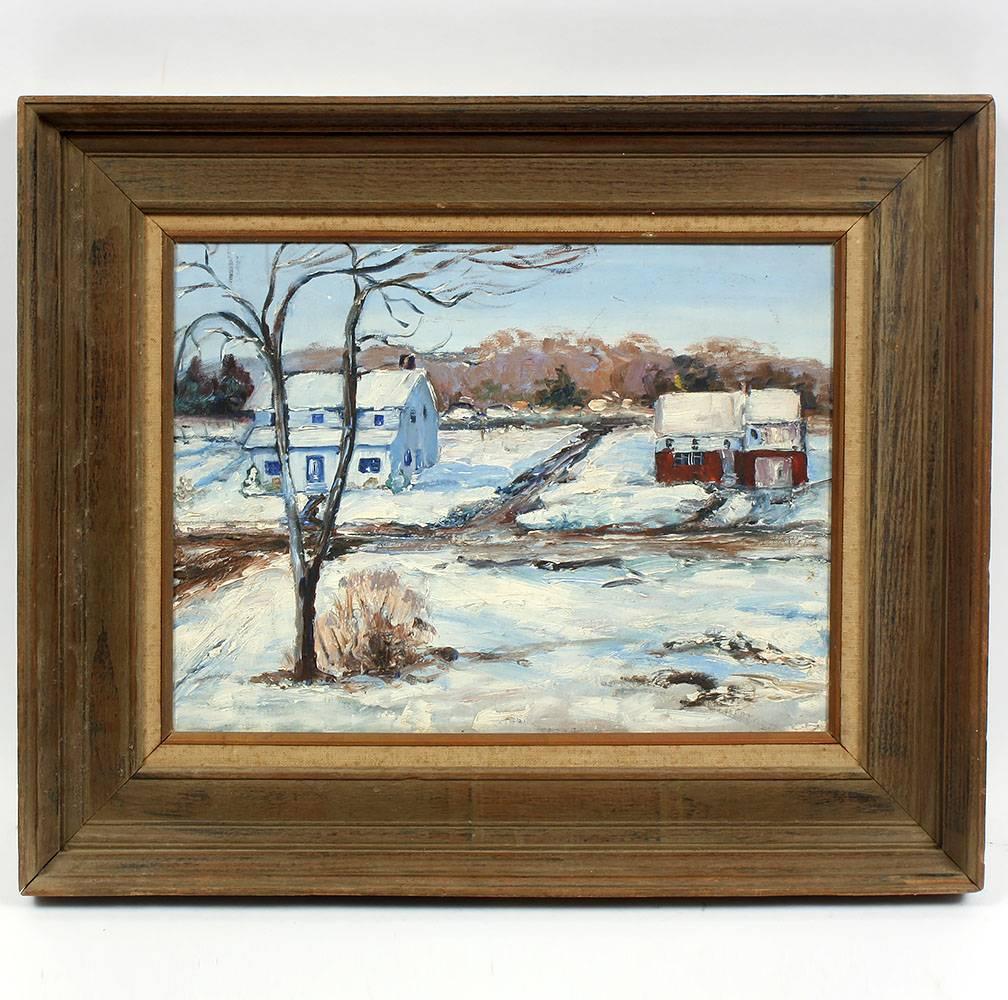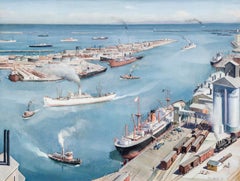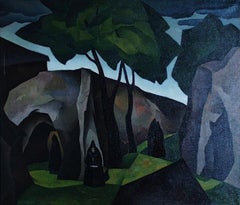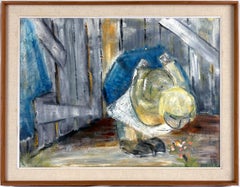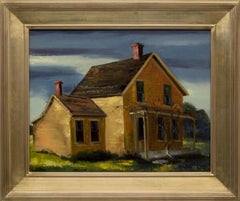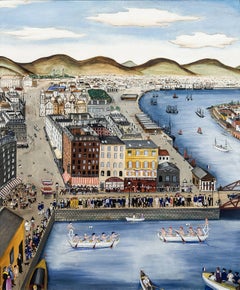
Le 14 Juillet
View Similar Items
Want more images or videos?
Request additional images or videos from the seller
1 of 9
Hilaire HilerLe 14 Juillet1928
1928
About the Item
- Creator:Hilaire Hiler (1898-1966, American)
- Creation Year:1928
- Dimensions:Height: 30 in (76.2 cm)Width: 24.75 in (62.87 cm)
- Medium:
- Movement & Style:
- Period:
- Condition:
- Gallery Location:New York, NY
- Reference Number:Seller: APG 88431stDibs: LU23338682
About the Seller
5.0
Recognized Seller
These prestigious sellers are industry leaders and represent the highest echelon for item quality and design.
Established in 1952
1stDibs seller since 2010
32 sales on 1stDibs
Typical response time: 10 hours
Associations
Art Dealers Association of America
More From This SellerView All
- San Pedro HarborBy Paul SampleLocated in New York, NYIt is infrequent, to say the least, that a diagnosis of tuberculosis proves fortuitous, but that was the event, in 1921, that set Paul Starrett Sample on the road to becoming a professional artist. (The best source for an overview of Sample’s life and oeuvre remains Paul Sample: Painter of the American Scene, exhib. cat., [Hanover, New Hampshire: Hood Museum of Art, 1988] with a detailed and definitive chronology by Sample scholar, Paula F. Glick, and an essay by Robert L. McGrath. It is the source for this essay unless otherwise indicated.) Sample, born in Louisville, Kentucky, in 1896 to a construction engineer and his wife, spent his childhood moving with his family to the various locations that his father’s work took them. By 1911, the family had landed in Glencoe, Illinois, settling long enough for Paul to graduate from New Trier High School in 1916. Sample enrolled at Dartmouth College, in Hanover, New Hampshire, where his interests were anything but academic. His enthusiasms included the football and basketball teams, boxing, pledging at a fraternity, and learning to play the saxophone. After the United States entered World War I, Sample, to his family’s dismay, signed on for the Naval Reserve, leading directly to a hiatus from Dartmouth. In 1918 and 1919, Sample served in the U.S. Merchant Marine where he earned a third mate’s license and seriously contemplated life as a sailor. Acceding to parental pressure, he returned to Dartmouth, graduating in 1921. Sample’s undergraduate life revolved around sports and a jazz band he formed with his brother, Donald, two years younger and also a Dartmouth student. In November 1933, Sample summarized his life in a letter he wrote introducing himself to Frederick Newlin Price, founder of Ferargil Galleries, who would become his New York art dealer. The artist characterized his undergraduate years as spent “wasting my time intensively.” He told Price that that “I took an art appreciation course and slept thru it every day” (Ferargil Galleries Records, circa 1900–63, Archives of American Art, Smithsonian Institution, available on line). In 1920, Donald Sample contracted tuberculosis. He went for treatment to the world-famous Trudeau Sanitorium at Saranac Lake, in New York State’s Adirondack Mountains for the prescribed regimen of rest, healthful food, and fresh air. Visiting his brother in 1921, Paul also contracted the disease. Tuberculosis is highly contagious, and had no certain cure before the development of streptomycin in 1946. Even for patients who appeared to have recovered, there was a significant rate of recurrence. Thus, in his letter to Price, Sample avoided the stigma conjured by naming the disease, but wrote “I had a relapse with a bad lung and spent the next four years hospitalized in Saranac Lake.” The stringent physical restrictions imposed by adherence to “the cure” required Sample to cultivate an alternate set of interests. He read voraciously and, at the suggestion of his physician, contacted the husband of a fellow patient for instruction in art. That artist, then living in Saranac, was Jonas Lie (1880–1940), a prominent Norwegian-American painter and an associate academician at the National Academy of Design. Lie had gained renown for his dramatic 1913 series of paintings documenting the construction of the Panama Canal (The Metropolitan Museum of Art, New York; United States Military Academy, West Point, New York). Primarily a landscape artist, Lie had a particular affinity for scenes with water. His paintings, impressionistic, atmospheric, and brushy, never strayed from a realistic rendering of his subject. Sample regarded Lie as a mentor and retained a lifelong reverence for his teacher. Sample’s early paintings very much reflect Lie’s influence. ` In 1925, “cured,” Sample left Saranac Lake for what proved to be a brief stay in New York City, where his veteran’s benefits financed a commercial art course. The family, however, had moved to California, in the futile hope that the climate would benefit Donald. Sample joined them and after Donald’s death, remained in California, taking classes at the Otis Art Institute in Los Angeles. In Sample’s account to Price, “I couldn’t stomach the practice of painting a lot of High Sierras and desert flowers which seemed to be the only kind of pictures that were sold here so I got a job teaching drawing and painting at the art school of the University of Southern California.” Initially hired as a part-time instructor, Sample progressed to full-time status and ultimately, by the mid-1930s, to the post of Chairman of the Fine Art Department. Sample, however, did not want to wind up as a professor. “Teaching is all right in small doses,” he wrote, “but I have a horror of drifting into being a college professor and nothing more.” At the same time as he taught, Sample began to exhibit his work in a variety of venues at first locally, then nationally. Though he confessed himself “a terrible salesman,” and though occupied with continued learning and teaching, Sample was nonetheless, ambitious. In 1927, he wrote in his diary, “I am eventually going to be a painter and a damned good one. And what is more, I am going to make money at it” (as quoted by Glick, p. 15). In 1928, Sample felt sufficiently solvent to marry his long-time love, Sylvia Howland, who had also been a patient at Saranac Lake. The Howland family were rooted New Englanders and in summertime the Samples regularly traveled East for family reunion vacations. While the 1930s brought serious hardship to many artists, for Paul Sample it was a decade of success. Buttressed by the financial safety net of his teacher’s salary, he painted realist depictions of the American scene. While his work addressed depression-era conditions with a sympathetic eye, Sample avoided the anger and tinge of bitterness that characterized much contemporary realist art. Beginning in 1930, Sample began to exhibit regularly in juried exhibitions at important national venues, garnering prizes along the way. In 1930, Inner Harbor won an honorable mention in the Annual Exhibition of the Art Institute of Chicago. That same year Sample was also represented in a show at the Albright-Knox Gallery in Buffalo and at the Biennial Exhibition of the Corcoran Gallery of Art, Washington, D.C. In 1931, Dairy Ranch won the second Hallgarten Prize at the Annual Exhibition of the National Academy of Design, in New York. Sample also made his first appearances at the Carnegie Institute, Pittsburgh, and The Pennsylvania Academy of the Fine Arts, Philadelphia. In 1936, Miner’s Resting won the Temple Gold Medal at the Pennsylvania Academy’s Annual Exhibition. Always interested in watercolor, in 1936, Sample began to send works on paper to exhibitions at the Whitney Museum, New York. While participating in juried exhibitions, Sample also cultivated commercial possibilities. His first New York art dealer was the prestigious Macbeth Gallery in New York, which included his work in a November 1931 exhibition. In 1934, Sample joined the Ferargil Galleries in New York, after Fred Price arranged the sale of Sample’s Church Supper to the Michele and Donald D’Amour Museum of Fine Arts in Springfield, Massachusetts. In 1937, The Metropolitan Museum of Art purchased Sample’s Janitor’s Holiday from the annual exhibition of the National Academy of Design, a notable honor. As prestigious as this exhibition schedule may have been, by far Sample’s most visible presence in the 1930s and 1940s was the result of his relationship with Henry Luce’s burgeoning publishing empire, Time, Inc. Sample’s first contribution to a Luce publication appears to have been another San Pedro...Category
20th Century American Modern Landscape Paintings
MaterialsCanvas, Oil
- The Old Monastery WallBy William S. SchwartzLocated in New York, NYSigned (at lower left): WILLIAM S. SCHWARTZCategory
Early 20th Century American Modern Landscape Paintings
MaterialsCanvas, Oil
- Bird in CageLocated in New York, NYGouache on board, 20 x 24 in. Signed (at lower right): Atherton Painted about 1940 RECORDED: Art News (May 11, 1940), illus. [clipping citation] EXHIBITED: The Art Institute of Chicago, 1940, The International Watercolor Exhibition, no. 156, illus. on cover as Bird in Cage...Category
Mid-20th Century American Modern Landscape Paintings
MaterialsTempera, Wood Panel
- Figure in a LandscapeBy David JohnsonLocated in New York, NYSigned (at lower right): DJ [monogram]; (on back): David Johnson 1865Category
Mid-19th Century American Realist Landscape Paintings
MaterialsOil, Board
- Strawberries Strewn on a Forest FloorBy William Mason BrownLocated in New York, NYWilliam Mason Brown was born in Troy, New York, where he studied for several years with local artists, including the leading portraitist there, Abel Buel Moore. In 1850, he moved to ...Category
19th Century American Realist Landscape Paintings
MaterialsCanvas, Oil
- Chestnut Racehorse with a Jockey Up On a Training StrapBy Henry H. CrossLocated in New York, NYIt was Henry Cross's portraits of horses belonging to the prominent breeders and trainers of the second half of the nineteenth century that won the artist renown as an animal painter. Born and raised in upstate New York, Cross's proficiency in both drafting and caricature was revealed while he was still a student at the Binghamton Academy, New York. In 1852, when he was only fifteen years old, Cross joined a traveling circus that took him to Minneapolis, Minnesota, and to the first of many Indian encampments that he would draw upon for subject matter throughout his career. Biographers differ as to the year Cross left for Europe, however, he was in Paris from 1852 to 1853 or 1854, where he studied with Rosa Bonheur, a highly esteemed French painter of horses. Upon Cross's return to the United States he was commissioned to paint the studs of wealthy horsemen, including those of Commodore Cornelius Vanderbilt, Robert Bonner, the owner-publisher of The New York Ledger, and "Copper King" Marcus Daly, whose 18,000 acre stock farm was reputed to be the greatest and most valuable horse ranch in the world. Although Cross received the highest pay of any equine artist of his day (up to $35,000. for one order, according to The Horse Review of April 10, 1918, p. 328), he frequently joined traveling circuses and painted the locales where they visited. He also painted portraits of notable contemporaries, such as President Abraham Lincoln, ex-president Ulysses S. Grant, King Edward VII of England, W. F. "Buffalo Bill...Category
19th Century American Realist Animal Paintings
MaterialsCanvas, Oil
You May Also Like
- "New York City Harbor, " Modernist View of Port and Boats on a Cloudy DayBy Bela de TirefortLocated in New York, NYBela De Tirefort (1894 - 1993) New York City Harbor, 1932 Oil on canvasboard 14 x 18 Signed and dated lower left: De Tirefort 32 Bela de Tirefort was born in Eastern Europe, painted...Category
1930s American Modern Landscape Paintings
MaterialsCanvas, Oil, Board
$6,000 Sale Price20% Off - "Mutual Admiration" Flower Mid-Century Modern Oil Painting Monterey ArtistLocated in Soquel, CA"Mutual Admiration" Flower Mid-Century Modern Oil Painting Monterey Artist Mid-Century Modern painting of a little blonde girl in a white apron adoring her flowers by Monterey Artist Rose Marie (Smith) Ansel, (American, 1921-2012) Rose Marie was born and lived in the Monterey area all her life. She volunteered in various city government associations and founded the Parade of Nations in 1970 which celebrated the many ethnic cultures on the Monterey Peninsula...Category
1960s American Modern Figurative Paintings
MaterialsCanvas, Oil, Illustration Board
- East Santa Cruz (California), Farm House with Storm Clouds Landscape PaintingBy Jon BlanchetteLocated in Denver, CO"East Santa Cruz (California)" is an oil on canvas board by Jon Blanchette (1908-1987) of a yellow farm house with dark gray storm clouds overhead. Presented in a custom frame, outer dimensions measure 21 ¾ x 25 ¾ x 1 ½ inches. Image size is 16 x 20 inches. Painting is in very good vintage condition - please contact us for a detailed condition report. Expedited and international shipping is available - please contact us for a quote. About the Artist: Jon Blanchette Born England, 1908 Died California, 1987 Jon Blanchette was born in Somerset, England on March 29, 1908. He immigrated to Battle Creek, Michigan in 1918. Artistically inclined at age six, he later studied at the Pittsburgh Art...Category
1950s American Modern Figurative Paintings
MaterialsCanvas, Oil, Board
- The Break of the HazeBy Aaron Henry GorsonLocated in New York, NYSigned lower right: AH GorsonCategory
1920s American Modern Landscape Paintings
MaterialsCanvas, Oil, Board
- "Bucolic Landscape, " Sally Michel Avery, Female American Modernist Bright PastelBy Sally Michel-AveryLocated in New York, NYSally Michel Avery (1902 - 2003) Bucolic Landscape with Cows, 1963 Oil on canvasboard 9 x 12 inches Signed and dated lower left Provenance: The art...Category
1980s American Modern Landscape Paintings
MaterialsBoard, Canvas, Oil
- Night Life in the City - Figurative CityscapeLocated in Soquel, CANight Life in the City - Figurative Cityscape Mid 1960s cityscape by an unknown artist. Oil on artists board. Image, 16"H x 20"WCategory
1960s American Modern Figurative Paintings
MaterialsCanvas, Oil, Illustration Board
$600 Sale Price20% Off

